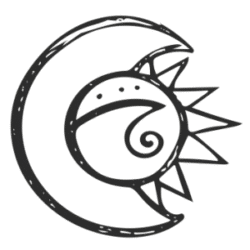I surrender myself to the sea the salt of infinite lives washing over me I can forgive a little sand lingering in my hair
artifice
we speak in riddles and doublespeak and half-finished glances i am tired of never saying what i mean and hoping you understand me: coy but ready you: distant but yearning everything is artifice and we are just playing parts Day 3-Write about interpersonal relationships and the games we play to avoid vulnerability.
Today was a good day, but…
I have not quite burned down this house let’s call it a coat that I have hung up in the summer months a house feels too large and too final a thing and I fear that winter will find mind me and I will be all to ready to drape myself in old sorrows. Day 2- Write a poem that addresses at least one other poem and/or poet by name. You might imitate, parody, disagree with, champion, or generally respond to the other poem and poet. I chose A Good Day by Kait Rokowski
Housekeeping
I’m about to post a bunch of poems from the various half-finished poetry challenges I’ve started for 2015. Enjoy. Promptly in January For My Girl April 2015
Love Like a Mango
Dec 22, 2014 There was a fullness to our love like that mango just within your reach unblemished and warm falling straight into your palm eaten under the shade of the tree juice dripping down your elbow temporary in its bliss, but perfect in that moment.
Showing|Learning
For one of my classes in my first semester of college, my final project was to create an installation demonstrating how I learned in the class. Throughout the semester I was perpetually frustrated with the course. It was based in art history, but the art we looked at and the conversations we had remained centred around whiteness. That is a story for another post though. The installation had to include an image of ourselves as learners, objects, and a quote. I have compiled some photographs of this final project, my statement, and audio from my final presentation. Presentation Audio “The…
always in the quiet hours (22 sept 2014)
at night i ask when will i relearn to love myself in the quiet hours
lessons i have yet to learn
(22 July 2014) Things that start with “maybe if I” and end with “then I will feel better’ rarely ever work. Happiness will not come from someone else’s touch there is nothing and noone you can put in your mouth or on your body that can bring you joy.
27 april 2014
self-loathing: i find myself relieved when vile men can still find this expanse of flesh appetizing
24 april 2014
you are not a graceful sleeper but i have learned to love your sprawled sighs when i can’t sleep.
